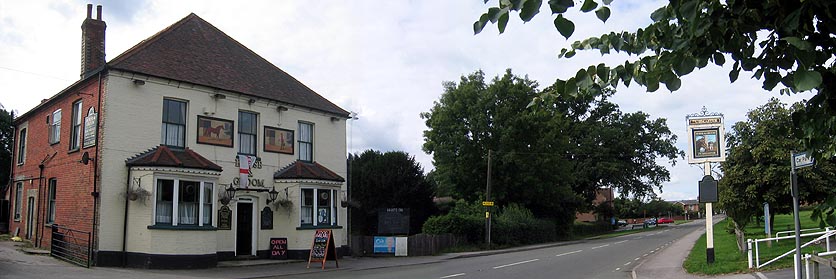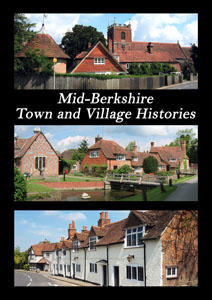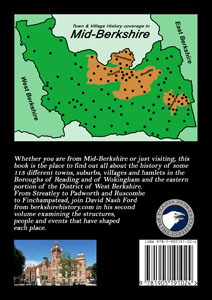 |
 |
||||||||
|
|
Stratfield Mortimer Saxon Lords & Hunting Lords
The name of the present village partly stems from the Roman road from Silchester to Dorchester-on-Thames: Anglo-Saxon Strad-Feld, modern Street-Field, means the Roman road among open land. The Anglo-Saxons have left their mark on the parish church where an extremely rare 10th century tombstone of that date may be seen. It reads: On 8th before Kalends of October, The Mortimer part of the place-name stems from the lords of the manor, the Mortimer family, the Earls of March from Wigmore in Herefordshire. They were given the manor shortly after the Norman Conquest and held it throughout the Middle Ages. Hugh Mortimer probably spent some time there, as he was a great patron of Reading Abbey, where his heart was buried after his death in 1227. His brother, Ralph, established the right of free warren to hunt hares, rabbits, pheasants and partridges at the manor in 1230 and created a large park around it at about the same time. So Mortimer may have held sporting parties there when at the royal court in Windsor. In 1250, his widow, Princess Gwladys of Gwynedd, was certainly given permission to keep her hunting dogs at Stratfield. The manor was, however, eventually leased out to the Bishop of Winchester. Even so, it is just possible that Edmund Mortimer, the 3rd Earl of March, may have stayed there prior to his wedding. He was married, at Reading Abbey in 1359, to Princess Philippa, only daughter and sole heiress of Prince Lionel, Duke of Clarence, the third son of King Edward III. For a short period in the early 14th century, the manor was confiscated from the great rebel, Roger Mortimer, the 1st Earl of March, by King Edward III. It was during this period that a royal stud farm was established at the Manor Farm, adjoining the manor house. The horses bred there would have fought in the Hundred Years' War during the King's attempt to claim the French Throne. It was probably wound up at the beginning of the following century. During the Tudor period, the manor was one of the minor lands granted to each of the wives of Henry VIII in turn (save for Anne of Cleves). In 1535, the park keeper, Lord Sandys, had cause to complain of illegal hunting in the park at Stratfield by Thomas Trapnell, the brother-in-law of Sir Thomas Englefield of Englefield House. When he sent his brother to investigate, he was attacked and injured by Trapnell and his six servants. Sandys wrote to the King for redress but whether he got it or not is unclear. On 2nd February 1787, an old labouring man from Stratfield Mortimer, called William Billimore, was brutally murdered on the local common by two idle lads from Ufton Nervet who wanted some money to spend at the Reading Fair. They bludgeoned the poor man with a lead weighted club and took his pocket watch but were too flustered to search properly for his money. They escaped to Hare Hatch and then Maidenhead, where they sold the watch, but were captured when they decided to return home. They were condemned to death at the Reading Assizes and hanged at Gibbet Piece (which is just within Ufton parish) on Mortimer Common. Mortimer Common, where the villagers once freely grazed their livestock, was enclosed for cultivation in 1802, mostly with the consent of the parish residents, although the vicar protested. The settlement of Mortimer Common, or simply Mortimer, began to slowly grow up soon afterwards, although there was no organised building programme until the 1870s. Read more history of Stratfield Mortimer and other nearby settlements, like Wokefield & Burghfield Common, in David Nash Ford's book, 'Mid-Berkshire Town and Village Histories'. Click to Order direct from the Author.
|
||||||||
| © Nash Ford Publishing 2004; Revised 2020. All Rights Reserved. | |||||||||





